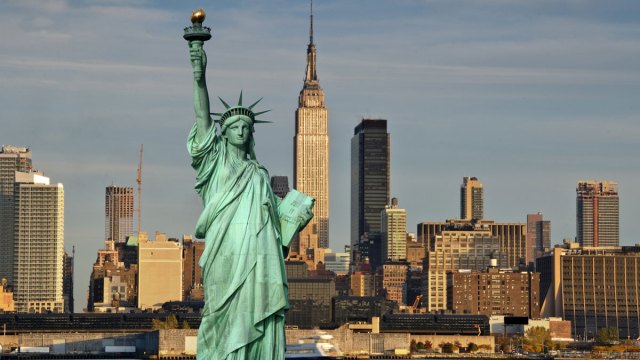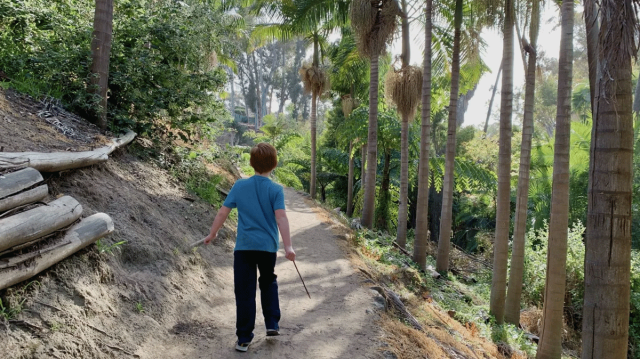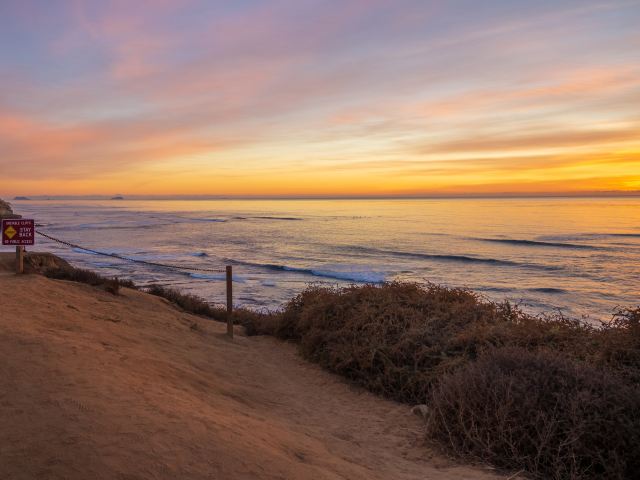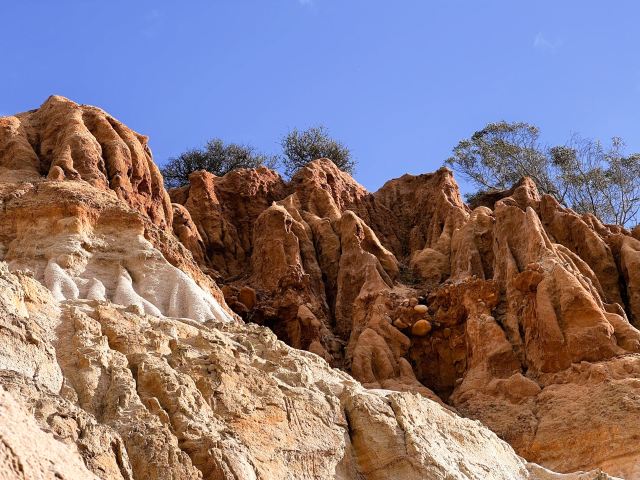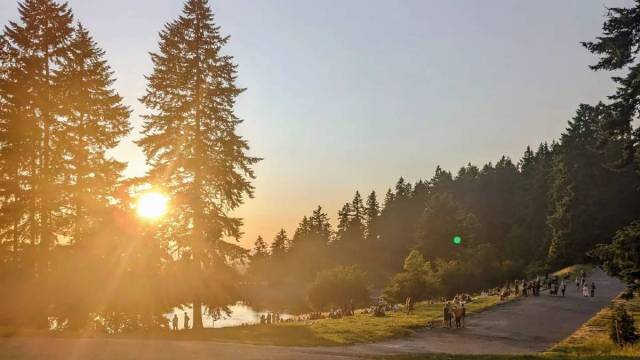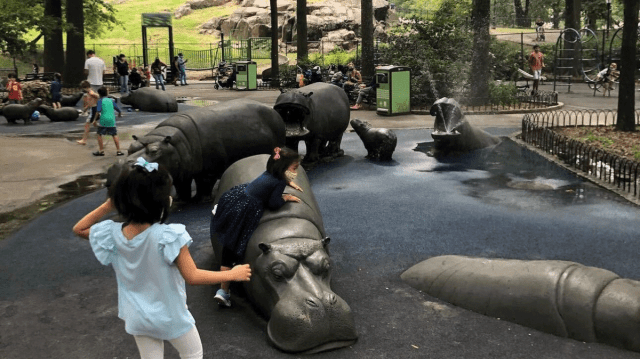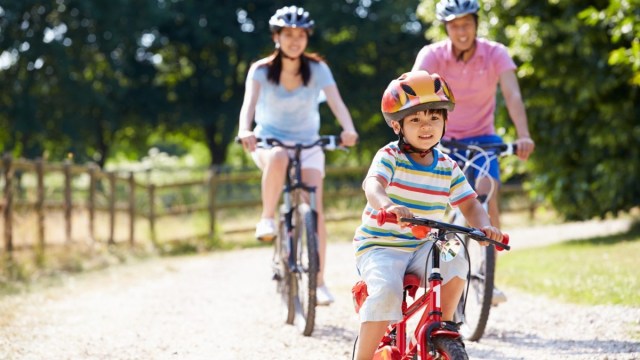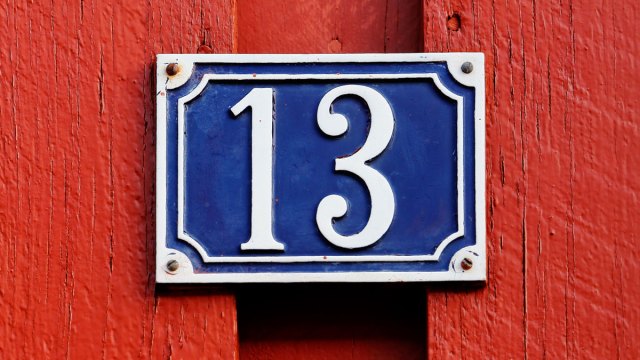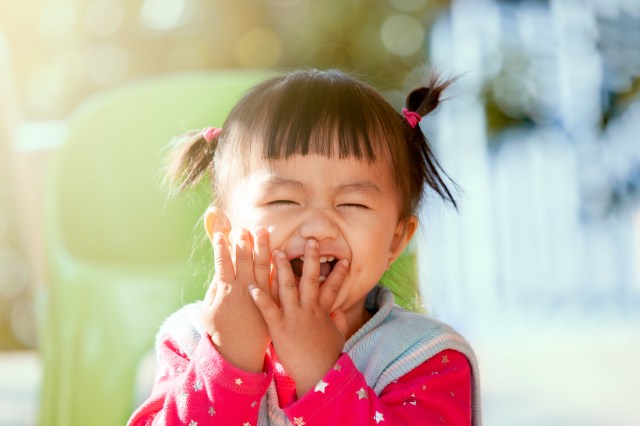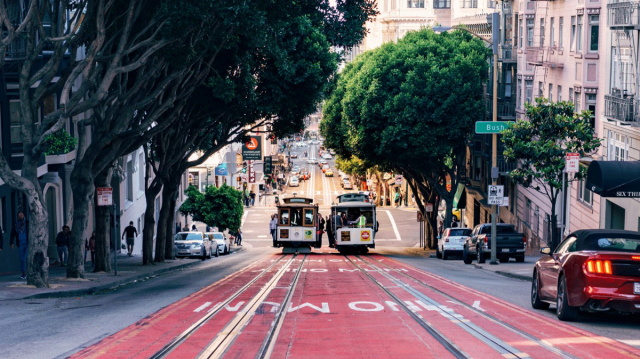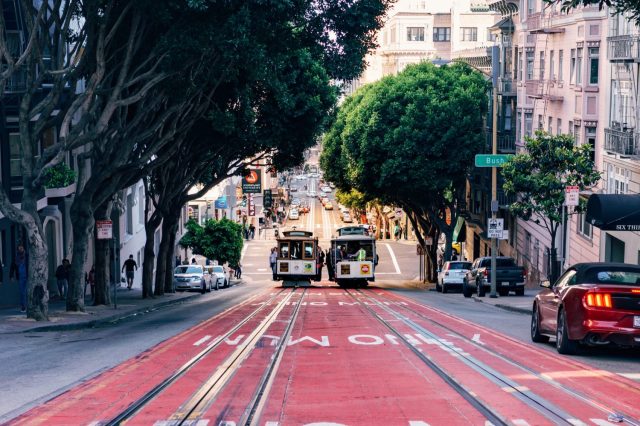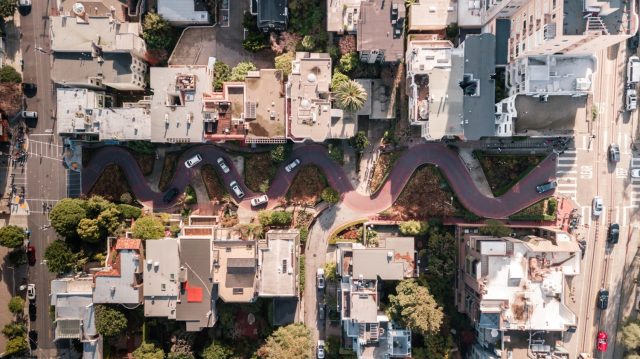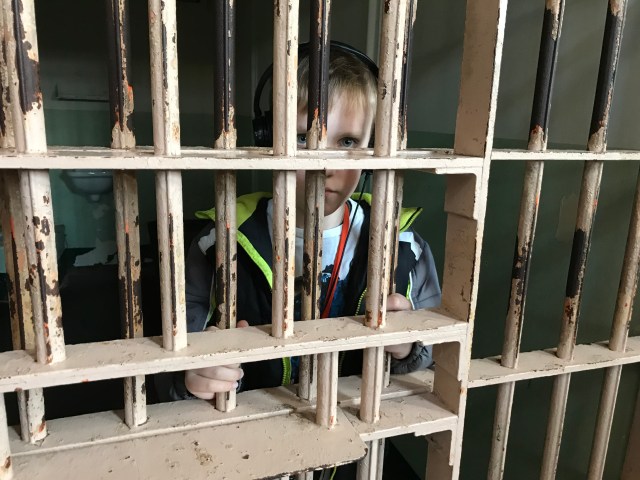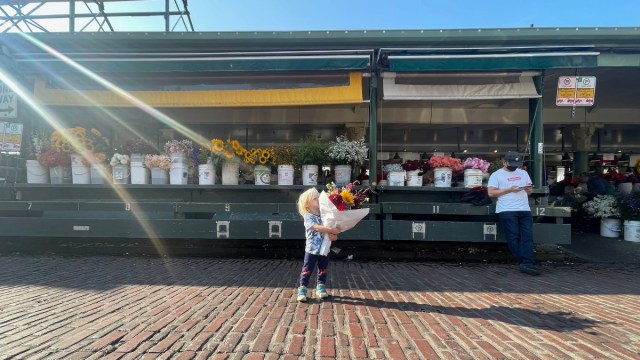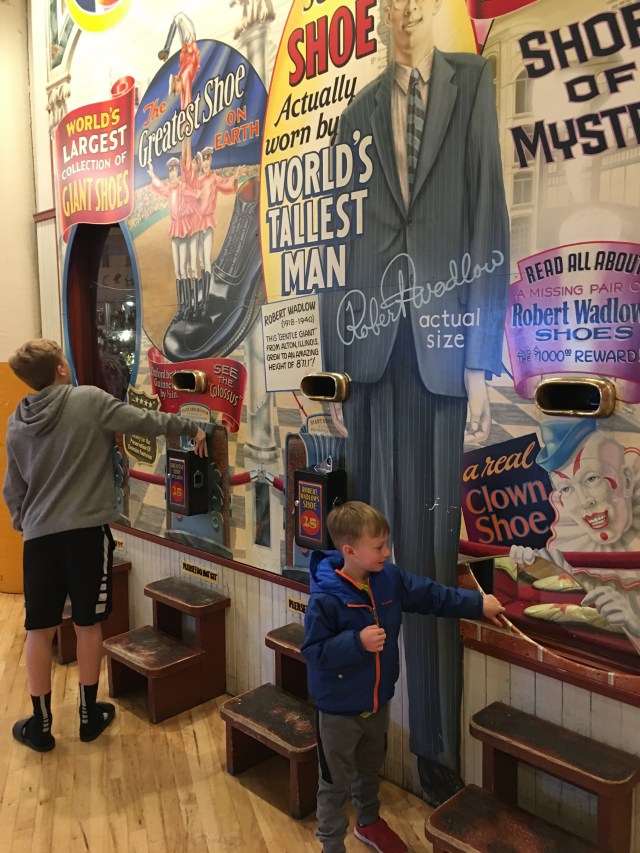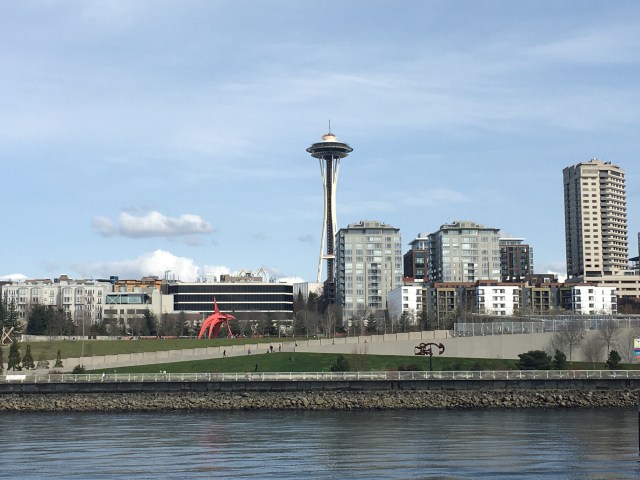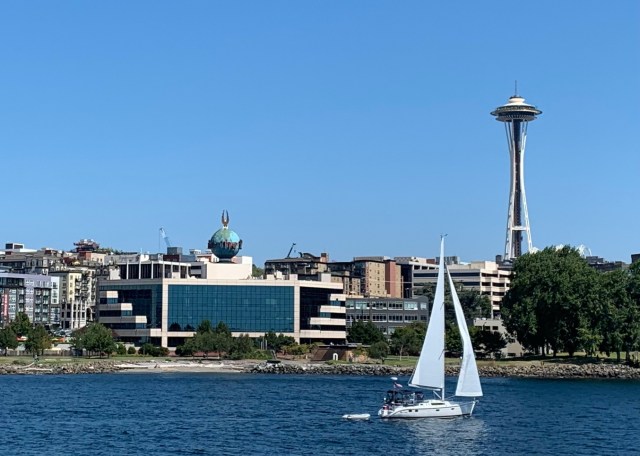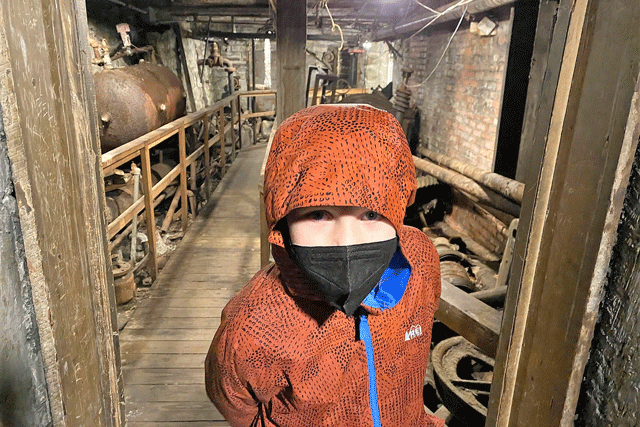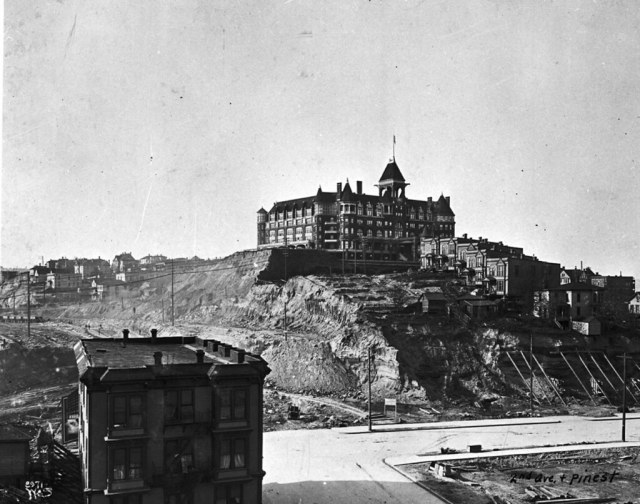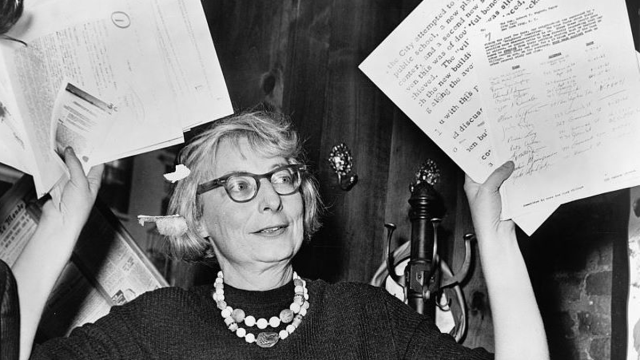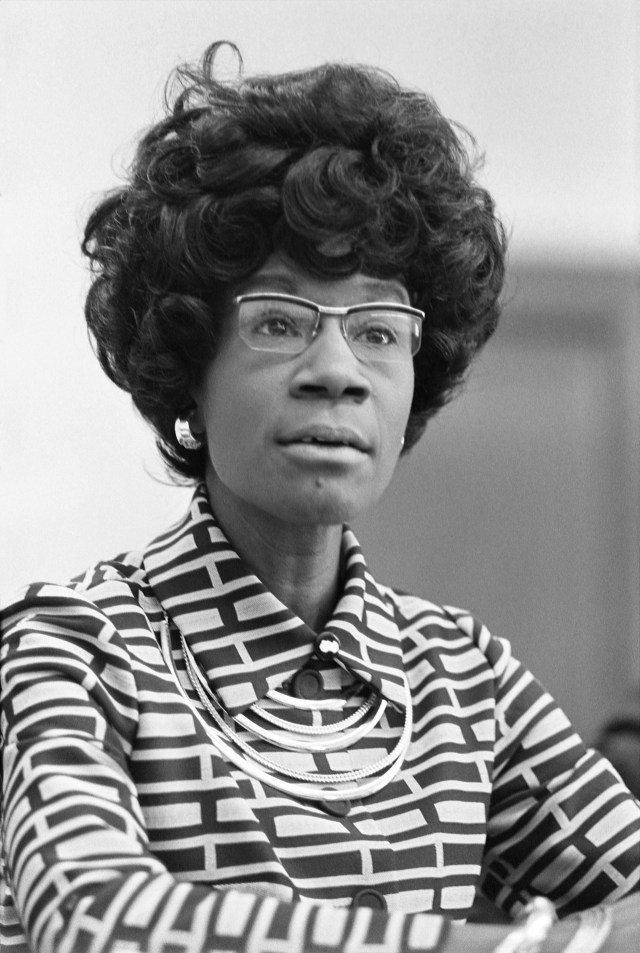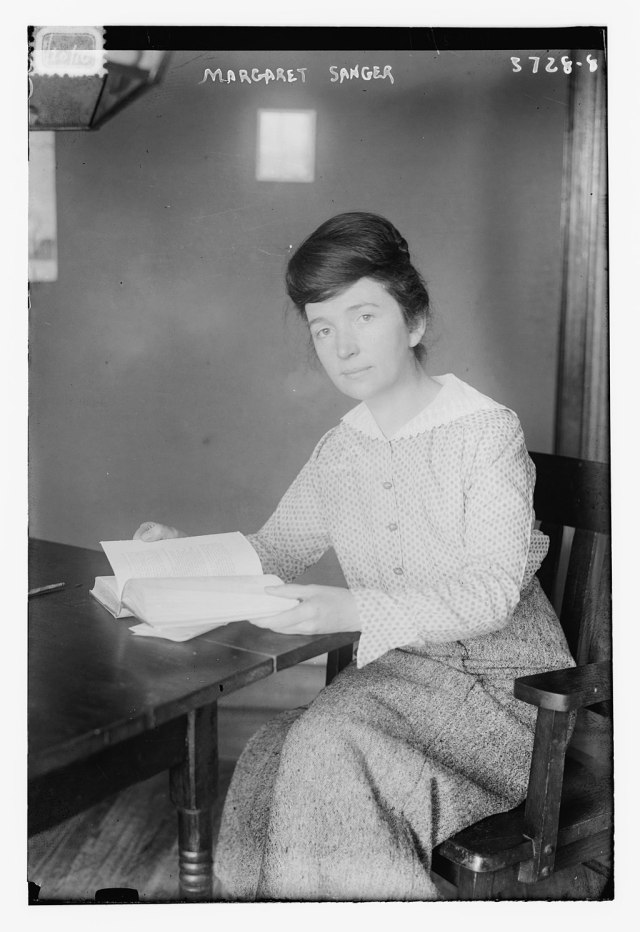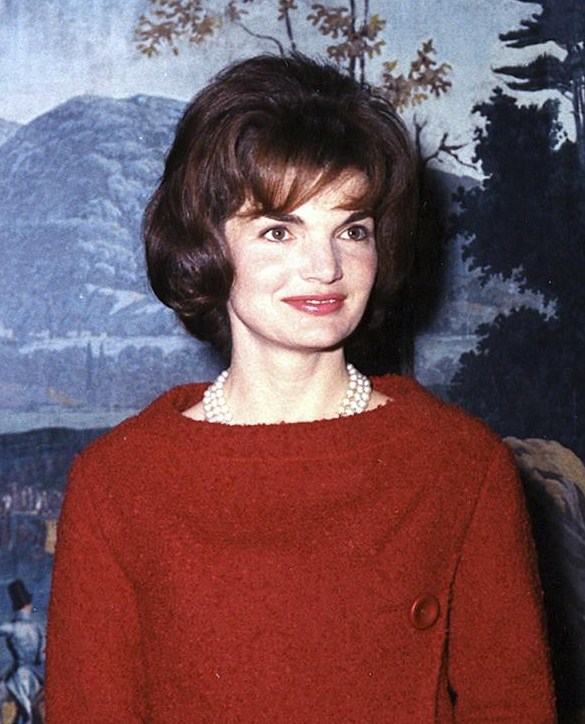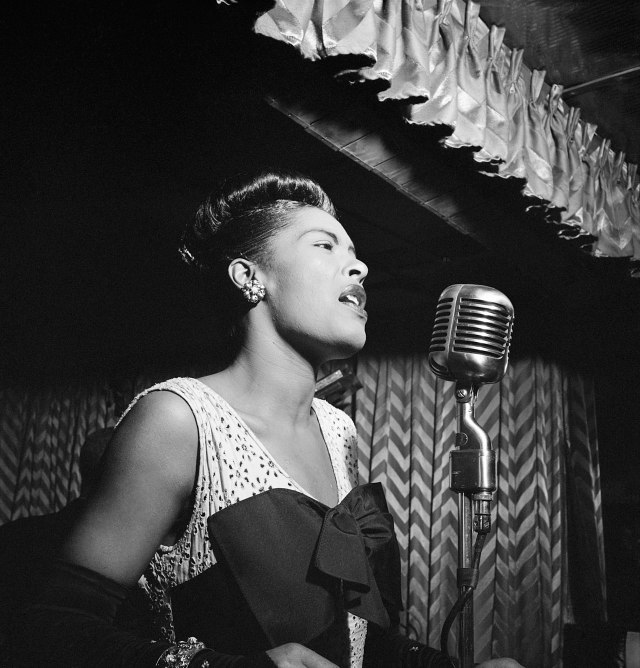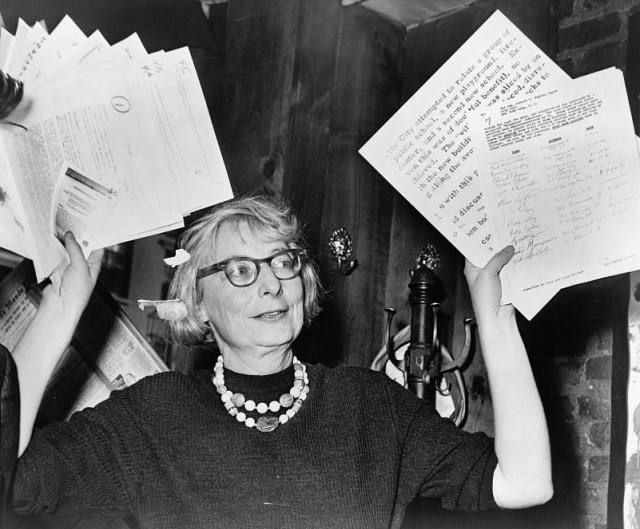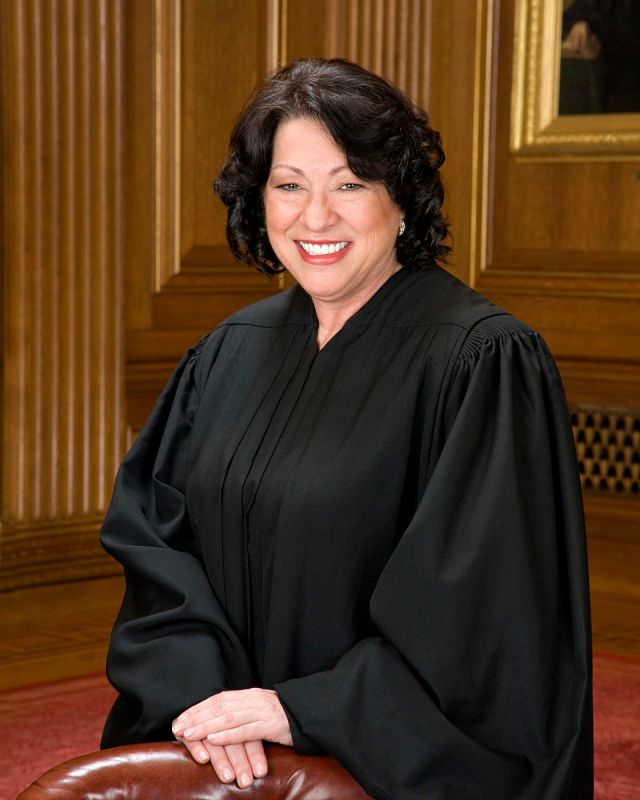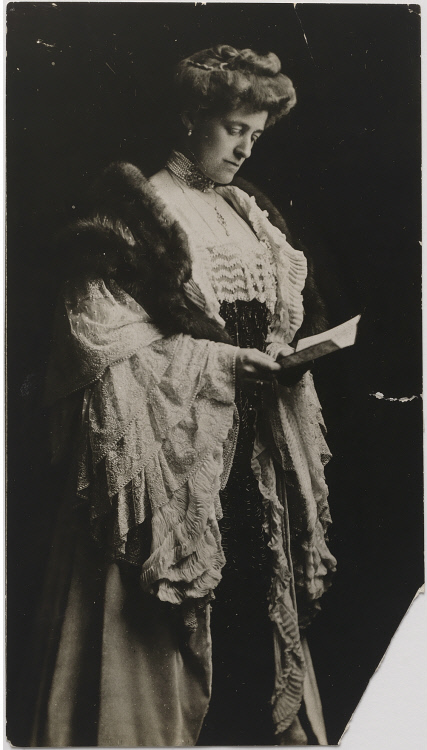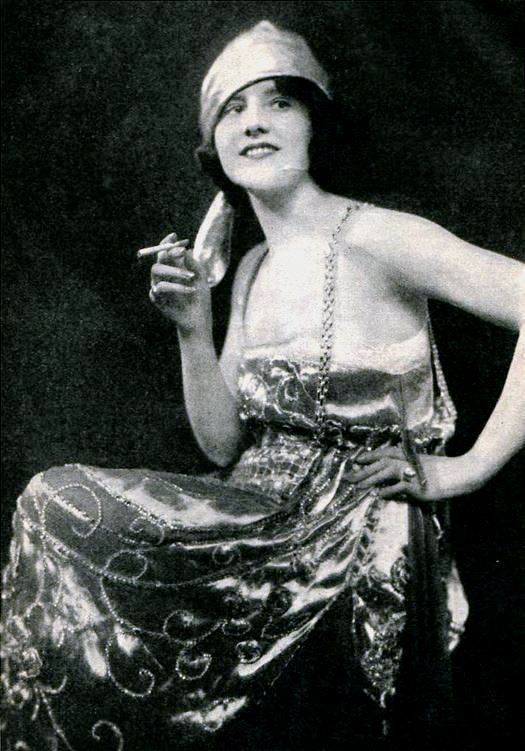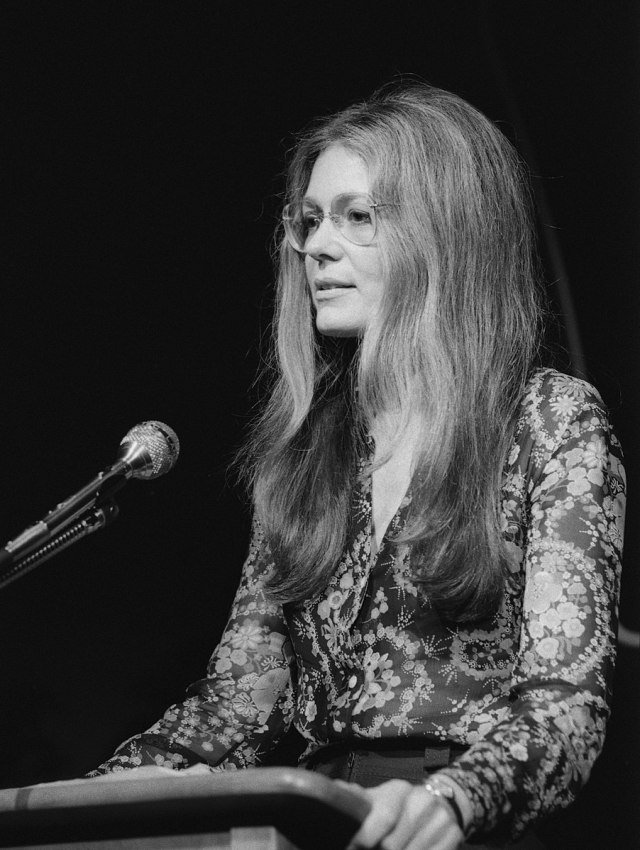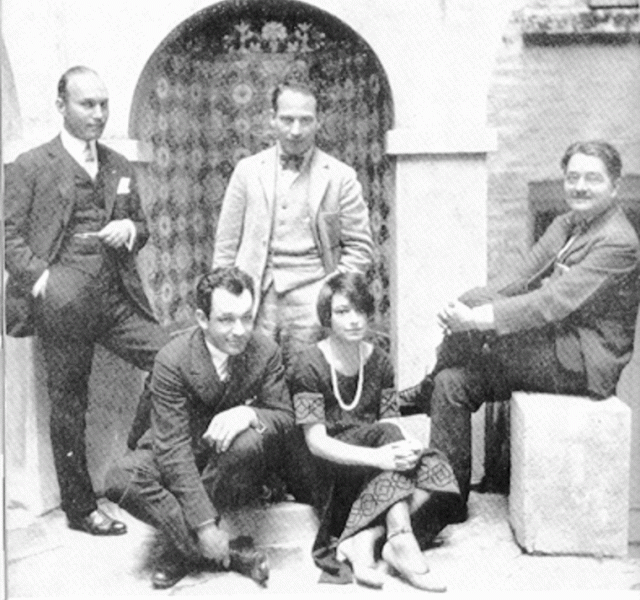Whether you are looking for the best playgrounds in Central Park, or ones that have been renovated in the last few years, this list has it all
NYC’s playgrounds were already awesome, but recent upgrades have made many of them even more epic destinations of fun for kids (and parents!). No matter what your kid’s age or style of play is, there’s an NYC playground for them.
We’ve rounded up all of our intel on the best NYC parks and playgrounds for kids—from the best playgrounds from around the city’s boroughs (including Brooklyn and Manhattan playgrounds), to cool splash pads and shady spots to cool down in the summer. Pack up some water, a change of clothes, a towel, and some snacks…and go play!
Our Favorite Manhattan Playgrounds
Teardrop Park in Battery Park
The two-acre, sustainable Teardrop Park was designed by child development experts and it shows. The park’s play elements are integrated into the awesome landscape, which allows children to interact with water, plants, rock, and sand. The shadier southern half of the park features a rock step-path that leads up to a long slide, two sand pits, “theatre steps,” and a water playground. The northern half of the park features a broad lawn (which receives lots of sunlight), park benches, a wetland, and a perched gathering area made from rocks, the last of which is an installation created by artist Ann Hamilton.
Dividing these two areas is a large wall, composed of rocks brought to lower Manhattan from elsewhere in New York State. A short tunnel connects the two areas, and paths crisscross the site, providing elevated views within the park and beyond as well as connections across the park. It’s a hidden gem of a spot for those really looking to connect with nature and take a literal few steps out of the hustle and bustle of New York City.
Restrooms: Located at the northwest corner and in the lower level of the Solaire Building, across the street from the Park House.
Warren St. in Battery Park
Battery Park City
Online: mvvainc.com
Battery Playscape in Battery Park
This playground is a natural-feeling oasis located right alongside the Seaglass Carousel that opened in 2021. The play structures draw inspiration from the surrounding landscape and feature open-ended play. There are plenty of spaces to run, play, slide, and climb, and the designs feature plenty of fun shapes and textures to look at and touch. Plus, it was opened with Hurricane Sandy in mind, and the entire space (including the plants) is designed to “flood and recover” in case of flooding. Battery Playscape is also home to ShowBox, a small stage that frequently hosts free plays, puppet shows, improv sessions, and more.
Restrooms: None on-site, but there are restrooms just a few minutes walk from the playground.
20 State St.
Battery Park City
Online: thebattery.org
Toll Family Playground in Central Park
The Toll Family Playground is a prime spot for toddlers and preschool kids, offering a full selection of features for a wide variety of play. The hallmark of the playground is two small house structures, a nod to similar shelters from the playground’s original 1936 design. (The playground was renovated in 2018.)
You’ll also find a smaller slide and play structure, swings, spinner, and spring toys, and an area for sand play that’s sized for smaller children. The playground is located at the base of Summit Rock, the highest point in the park and a popular point of interest.
Restrooms: None on-site. The closest park restrooms are located at Delacorte Theater, around 80th Street.
West side of Central Park at 84th Street, near Mariner’s Gate 85th Street entrance
Upper West Side
Online: centralparknyc.org
Billy Johnson Playground in Central Park
Inspired by the Central Park nature that surrounds it, this playground is like a miniature version of the park. The playground received a facelift in 2018, adding more opportunities for play and interaction while maintaining its charming natural feel. Kids can slide down granite slides (meant to feel like a smaller version of sliding down one of the park’s famous rock formations), walk across a miniature bridge, follow natural-feeling trails, or hang out in the wooden play structure.
Restrooms: Be aware that the closest restrooms are located at Heckscher Playground, which is a bit of a walk.
East Side at 67th
Upper East Side
Online: centralparknyc.org
Pier 25 Playground at Hudson River Park
River Park’s Pier 25 Playground is the golden ticket of playgrounds with a rock climbing wall, two space-age climbing structures for big kids, small slides for toddlers, a modern merry-go-round, a roomy sandbox, multiple swing sets, and a huge water play area. Not to mention, it’s next door to a skate park, snack shack, mini-golf course (for a fee), beach volleyball court, and soccer field.
Need more? Kids can explore a historic steamship and tugboat! The park also features an on-site Art Shack, where kids can get crafty and creative at no cost. Ice cream and light snacks can be purchased nearby for a good cause: Proceeds support the park and Manhattan-based youth programs.
Restrooms: Find the restrooms near the pier entrance along the walking path, close to the playground.
North Moore St. at Hudson River
Tribeca
Online: hudsonriverpark.org
Dinosaur Playground in Riverside Park
This playground has swings, two sandboxes, a summer spray shower, lots of places to climb, and plenty of shade provided by large trees. But the playground’s main attraction is its namesake: two fiberglass dinosaurs! The Triceratops and hadrosaur (which you may recognize by its other name, a duckbill dinosaur) offer a whimsical space for climbing and imaginative play. Plus, Dinosaur Playground is located in Riverside Park, which has spectacular views of the Hudson River and New Jersey, and many places to explore and rest when the little ones have had their fill of playing.
Restrooms: The playground has a restroom at 97th Street & Riverside Drive.
6681 Riverside Dr.
Upper West Side
Online: nycgovparks.org
The Ancient Playground in Central Park
https://www.instagram.com/p/CqQoKWVOobS/?hidecaption=true
The Ancient Playground is one of Central Park’s adventure-style playgrounds, which features play structures that you wouldn’t normally find in a traditional playground. The popular play spot is inspired by the Egyptian exhibits at the nearby Metropolitan Museum of Art, located a stone’s throw away from the playground. It’s a perfect place to visit for a picnic and some fun in the sun after a trip to the museum.
Kids can scramble around on the pyramids, obelisk, and sundial—or frolic in the sandbox, swings, and slides. Sprinklers will cool down steaming kiddos on hot days. Be on the lookout for some beautiful sculptures depicting different fairy tales scattered throughout the playground, like a brass squirrel and peacock, and various storybook fables on the playground gates.
Restrooms: On-site restrooms are available from 7 a.m. until dusk.
East Side at 85th St.
Upper East Side
Online: centralparknyc.org
Indian Road Playground at Inwood Hill Park
Named after the Indian settlement that used to stand on the site, Indian Road Playground is a community space that’s maintained and fundraised by the Friends of the Indian Road Playgrond organization. The playground is made up of muted browns and blues, looking like it belongs in the middle of the natural space it resides in. It’s themed around chess and checkers, complete with pawn-shaped sprinklers and a checkerboard painted on the pavement. There’s also a complete playground set, including a wooden climbing structure and swings. Rocks form places to climb or sit, making for a hybrid naturalistic and modern playground space for all ages.
Restrooms: Yes, restrooms are available.
570 W. 214th St.
Inwood
Online: nycgovparks.org
Discovery Playground in Fort Washington Park
The Discovery Playground is built right into its surroundings, with slides and benches standing literally at the bases of large trees. This means there’s plenty of shade all summer long, and that kids can interact with both structured playground equipment and unstructured imaginative play with the surrounding natural environment. There’s a charming treehouse made of tree trunks, a rope web for climbing, a mini-mountain of rocks, and a sand pit.
Restrooms: Restrooms are available; however, they’re not wheelchair-accessible.
Hudson River Greenway at W. 163rd St.
Washington Heights
Online: nycgovparks.org
Bloomingdale Playground in the UWS
The fun checkered floor, the curved structures, and the circular gear kinetic fixtures make Bloomingdale Playground look like a steampunk park. Besides looking incredibly stylish, this playground uses a special “universal design” concept, which emphasizes accessible design for all children. The playground merges equipment meant for different levels of physical and mental ability, encouraging interaction between children who might otherwise be delegated to different parts of the playground.
Restrooms: Yes, the playground has restrooms.
Amsterdam Ave. & W. 104th St.
Upper West Side
Online: nycgovparks.org
Our Favorite Brooklyn Playgrounds
Domino Park Playground
This playground is part of Domino Park, a five-acre park that opened in 2018. Built on the former site of the Domino Sugar Factory in North Williamsburg, this park provides gorgeous views of the East River. Domino Park is home to a one-of-a-kind playground designed by Mark Reigelman that’s inspired by the sugar refining process. It’s as fun to play in as it is to look at, with slides short and steep, ladders to scale, web tunnels to traverse, pulleys, platforms and stairs. There’s seating nearby for grownups, and faux turf for relaxing on. Tacos from the park’s food vendor Tacocina are nearby, but expect a line. Take note that wildly-popular pizza place Roberta’s has a location nearby at 6 Grand Street.
Restrooms: In the park, a short stroll away (very nice trailers when we visited).
15 River St. (Entrances along Kent Ave. at South 5th, South 3rd, and Grand Streets)
Williamsburg
Online: dominopark.com
Pier 3 at Brooklyn Bridge Park
While not exactly a playground, Pier 3 is worth checking out with the kids for at least a couple of reasons. First, it’s the final pier to be converted to park space in Brooklyn Bridge Park, in 2018. Second, it’s home to numerous interactive pieces, many of which happen to demonstrate scientific principles of sound and light. On one part of the pier, hedges of various shapes and sizes create a natural labyrinth with surprises around every turn: a walk-in kaleidoscope (extra large mirrored panels) parabolic reflectors, sound tubes, dance chimes, and stone seating from Gunther Beltzig. When you’re done, head to the massive open lawn to run around or lounge.
Restrooms: Not here; the closest one is one pier over on Pier 2, in the orange building.
334 Furman St.
Dumbo
Online: brooklynbridgepark.org
Harmony Playground in Prospect Park
Located next to the Prospect Park bandshell, this enormous playground was designed with music in mind. Little ones will find the harp and trumpet-shaped sprinklers totally refreshing in warmer weather. When they’re done, they can clang out a tune on the larger-than-life xylophones. Jungle gym equipment areas featuring slides, ramps and ladders are available for both toddlers and big kids.
Restrooms: Restrooms are available, but we recommend that you bring wipes as they’re not always stocked.
Prospect Park West between 9th and 11th Streets
Park Slope
Online: prospectpark.org
Zucker Natural Exploration Area in Prospect Park
When life throws an unexpected hurricane at you, you make the best of it. And that’s exactly what Prospect Park did with the Zucker Natural Exploration Area, which uses natural materials like trees that were damaged by Hurricane Sandy in 2012. The result is a very natural and unstructured playground for kids of all ages, allowing children to closely interact with nature.
Restrooms: None on-site. There are public bathrooms north and southwest from the playground.
Northeast section of Prospect Park
Prospect Lefferts Gardens
Online: prospectpark.org
Pier 6 Playgrounds in Brooklyn Bridge Park
This playground is, quite frankly, absurd in its offerings. A giant wooden teepee with slide exit, large spherical climbing structures and more slides built into the landscape are just a few of the highlights. On warm days, the Water Lab is packed with kids of all ages splashing around in the sprinklers and wading pool area. If they prefer to stay dry, your tots can put their building skills to the test in one of the city’s largest sandboxes. Looking for high-flying fun? Check out Swing Valley’s ten swing sets and Tarzan rope. Not for nothing: the landscaping, nearby waterside, and yummy food vendors at the park don’t hurt either.
Restrooms: Restrooms are available (at the Fornino Pizza building near the Water Lab).
Atlantic Ave. at Joralemon
Brooklyn Heights
Online: brooklynbridgepark.org
Main Street Playground in Brooklyn Bridge Park
Your little pirates will love this nautical-themed playground located in the shadow of the Manhattan Bridge on Pier 1 of Brooklyn Bridge Park. Kids can climb aboard the ship-shaped playground equipment and peep through portholes, race across bridges, or whiz down the twisty slide. A boat-shaped sandbox provides yet another spot for sunny day diversions.
Restrooms: Restrooms are available nearby at Pier 1.
Plymouth & Main St.
Dumbo
Online: brooklynbridgepark.org
Betsy Head Memorial Playground at Betsy Head Park
After a multi-year, $30 million overhaul, this Brownsville park has everything you could want. Additions include a skate park, a parkour course, an inclusionary basketball course for self-competition, handball and basketball courts, an event space, running track, athletic field, traverse wall and new play structures. Plus new plantings, game tables and renovated bathrooms. The park is also home to the city’s second Imagination Playground—a collection of large blue foam building blocks that encourage creativity and collaboration. (The first one, located in Manhattan’s Seaport District, is one of our favorites in the city.) Plus: there’s a huge pool in the summer.
Restrooms: The playground has wheelchair-accessible restrooms.
Dumont Ave. & Thomas S. Boyland St.
Brownsville
Online: nycgovparks.org
North Side Playground in Ft. Greene Park
Also affectionately known as New Fort Greene Park, this playground can be a nice alternative to the often-crowded play area on the other side of the park. The main attraction is a huge, fort-shaped structure, complete with slides, ramps, monkey bars and a couple of treehouse-like hangouts. A separate toddler area is available for the smaller set, complete with baby swings and pint-sized climbing equipment. Take a break from playing to check out the pillars surrounding the playground to learn the official state animal of each of the thirteen original colonies. (Spoiler alert: New York’s is not a pigeon, it’s a beaver.)
Restrooms: There’s a comfort station on-site.
Myrtle Ave. and St. Edwards Place
Fort Greene
Online: nycgovparks.org
Leif Ericson Park Playground in Bay Ridge
Named for Viking Leif Ericson, one of the first Europeans to set foot on North American soil, it’s fitting that the equipment at this playground has a Viking theme. Kids can climb the oar ladders and run across the wooden planks in the Viking ship-shaped play structure, or run through the flower-shaped sprinklers in the water play area. While the park tends to get crowded, it still has a true neighborhood feel.
Restrooms: Restrooms are available.
Shore Road between 3rd and 4th Avenues
Bay Ridge
Online: nycgovparks.org
Lincoln Terrace Park Playground in Crown Heights
Opened in 2019, this bright new play space forms a circular portion in Lincoln Terrace / Arthur S. Somers Park. It has separate play areas for big and small kids, slides, rope webs for climbing, and tons of monkey bars for kids to clamber around on. Besides the typical playground fare, the playground has some more open-ended play fixtures, like integrated natural spaces, colorful “stepping stones,” and some adorable little hobbit houses. There are sprinklers on-site as well, to cool down little visitors in the summer heat.
Restrooms: Restrooms are available, but they’re not wheelchair-accessible.
East New York Ave.
Crown Heights
Online: nycgovparks.org
Our Favorite Queens Playgrounds
Gantry Plaza State Park
Part sprinkler, part sculpture, and the water feature at Gantry Plaza State Park is not only cool-looking, but it also helps conserve water, operating for 45 minutes at a time. The shiny metal rods are kid-activated, and users can also regulate the water pressure as well. Nearby hammocks and seats offer a place to rest and enjoy the spectacular view of midtown. Don’t forget to take a stroll in the 12-acre riverside park and marvel at the Pepsi Cola sign or the large metal gantries—vestiges of the shipping industry—the structures that give the park its name.
Restrooms: The playground has restrooms by the basketball courts.
4-09 47th Rd.
Long Island City
Online: parks.ny.gov
Playground for All Children in Flushing Meadows Corona Park
This playground was specially designed to be accessible to children with disabilities. It was the first of its kind when it opened in 1984, and served as inspiration for others to open in other locations in NYC, as well as across the United States. The equipment is meant to accommodate kids ages 3 through 12, and features play structures that allow kids who use crutches, walkers, canes, or wheelchairs to enjoy the same kind of fun that able-bodied kids can achieve. The space includes a race track that surrounds an ADA-accessible splash pad, a 12-foot-long suspension bridge that’s equipped with safety measures, slides, and swings—all created to be accessible for all children. Plus, plaques around the park teach kids about nature in English and braille.
Restrooms: Yes, located at 111 Street and Corona Avenue.
11101 Corona Ave.
Corona
Online: nycgovparks.org
Astoria Heights Playground
The Astoria Heights Playground is a stylishly industrial space with gleaming steel and a slick design. It was recently renovated and now houses a curved climbing wall, some exercise equipment for adults, and a set of 10 spray jets for a splashing good time. The space caters to kids of all ages, from tots to teens. Parents will love it for the calm picnic area, where families can wind down and relax after an exciting romp through the park
Restrooms: Yes, public restrooms are available here.
30th Rd.
Astoria
Online: nycgovparks.org
Paul Raimonda Playground in Astoria
Take your little composers and performers out to this musical playground in Astoria for a frolicing fun time. The playground was originally called the Steinway Community Playground, named after the famous piano makers Steinway & Sons. Despite the new name (renamed to honor Paul Raimonda, a local community activist), the playground retains its musical origins in the play structures on offer. The main attraction is the piano-shaped sprinkler system, but there’s also a lyrical flow to the rest of the playground’s structures, which rise up and down like a melody. Though if this goes over your tot’s head, they’ll still love to cross the piano bridge or climb over and under the different curved structures.
Restrooms: There are restrooms in the playground.
47th Street &, 20th Ave.
Astoria
Online: nycgovparks.org
Jurassic Playground in Flushing Meadows Corona Park
The Jurassic Playground and its sister playground across the lake, the Triassic Playground are themed around—of course—dinosaurs! The playground pays homage to “Dinoland,” an exhibit from the 1964-5 World’s Fair held in Flushing Meadows Park. Alongside swings and monkey bars, the playground has some dino-inspired structures, like a curved ladder built like the spines of a stegosaurus. There’s also a large apatosaurus structure, and dino art depicting every kid’s favorites, from the triceratops to the ankylosaurus.
Restrooms: None in the playground. The closest restrooms are by the basketball courts north of the playground, on Grand Central Parkway.
Meadow Lake Dr. & Meadow Lake Trail
Flushing Meadows Corona Park
Online: nycgovparks.org
Our Favorite Bronx Playgrounds
Roberto Clemente State Park
Not only does this Bronx park feature an Olympic-size pool, you’ll also find a new sprayground with more than 20 spray features in a rainbow of colors and multiple shapes. The 25-acre waterfront park runs along the Harlem River and charges a nominal fee ($2 for adults, $1 for kids) to use the pool complex.
Restroom: Yes. In fact, this park boasts the city park’s first gender-neutral restroom.
301 West Tremont Ave.
University Heights
Online: parks.ny.gov
St. Mary’s Playground West in South Bronx
St. Mary’s Park is the largest park in South Bronx, and, as such, it’s pretty popular with the community. There are three playgrounds in the park, and all are worth a visit. The western playground was newly updated in 2019 and is now home to brand new play equipment and safety flooring in bright and colorful patterns, sprinklers for hot summer days, and a new adult fitness equipment section. There are now also more spaces to sit, including picnic tables, as well as renovated basketball courts. While you’re there, take a dip in the recreation center’s indoor pool! (You’ll need a membership to NYC’s system of park rec centers.)
Restrooms: Yes, ADA-compliant restrooms can be found in the playground.
519 St Ann’s Ave.
South Bronx
Online: nycgovparks.org
Our Favorite Staten Island Playgrounds
E.M.T. Christopher J. Prescott Playground
If you have a child who’s on the autism spectrum, they’ll feel right at home at this playground. Renamed in 1997 after a local Staten Island E.M.T. (he attended the school that stands by the playground), who died in the line of duty. The playground received a facelift in 2021, and now includes a brand new Sensory Playground, designed specifically for kids with autism. There are lots of spaces to interact with, including a depiction of the sign language alphabet, sensory boards for a variety of tactile feedback, metal drums, and more… in addition to the usual swing and climbing set. Sprinklers in the shape of rocks adorn the accessible splash pad, and there are some unique play spots like a slide composed of rollers for even more sensory feedback.
Restrooms: Yes, there are accessible restrooms in the playground.
Irvington St.
Staten Island
Online: nycgovparks.org
Seaside Wildlife Nature Playground
Never has anyone been so excited to be shipwrecked! This Staten Island playground is also known as Pirate Park and features a huge boat to explore and fun play equipment to climb. Structures are inspired by well-known Island mainstays like the Staten Island Ferry and the Lighthouse, and once the kids are done climbing, they can cool off in the spray showers.
Restrooms: There are no public restrooms in the park or the surrounding area, so come prepared. (Restrooms are planned but have been in the works for over five years now.)
Nelson Ave. & Tennyson Dr.
Great Kills, Staten Island
Online: nycgovparks.org
Other Awesome NYC Playgrounds
play:groundNYC at Governors Island
This playground is more like a junkyard, and heads up: parents aren’t allowed in! Kids are given free reign to discover, create, and build (with real tools!) as they wish. The space is watched over by trained “playworkers,” who support kids in their play, and help assess risk and keep things safe. Other than these helpers, the kids have all the power over how they play and what their play space looks like. The Yard is only open on weekends, April through November. It’s free to play, but note that there tends to be a wait.
And while you’re here on Governors Island, you don’t want to miss the other play spaces it has to offer. We highly recommend having a go at Slide Hill, which includes a slide that’s a whopping three stories tall, and checking out the Hammock Grove Play Area, where kids can clamber around on naturalistic structures made of logs and ropes.
Restrooms: Restrooms are located all around the island.
40 Barry Rd.
Governors Island
Online: play-ground.nyc
Imagination Playground
Imagination Playground, designed by famed architect (and dad) David Rockwell, is an interactive play space that prompts kids to engage in unstructured creative free play and make a play space of their own. Kids use sand, water and loose parts like giant foam blocks, mats, and fabric to engage in fantasy and cooperative play, as well as good old fashioned running around like nuts.
The flagship Imagination Playground is located near South Street Seaport at Burling Slip (South St., Front St. and John St.). Additional Imagination Playgrounds pop up in playgrounds around the city as well. Check the NYC Parks page to find a location near you!
Multiple locations
Online: nycgovparks.org
Best NYC Parks with Shade
Catbird Playground in Carl Schurz Park
Located on the south end of Yorkville’s lovely Carl Schurz Park (also home to the mayoral residence, Gracie Mansion) Catbird Playground takes its name from a James Thurber short story. You’ll find climbing structures, swings, monkey bars, rings, a sandbox and spray showers—all under the cover of shade mature trees. The park, home to two dog runs, is also known for being very dog-friendly.
Restrooms: Yes, restrooms are available.
East End Avenue and 84th St
Yorkville
Online: nycgovparks.org
Hippo Playground in Riverside Park
If hippos don’t know how to keep cool, who does? Much beloved by the community, the Safari Playground takes its more common name “Hippo Playground” from the impossible-to-miss Bob Cassily hippopotamus statues found “frolicking” in the park. A particularly good spot for young ones, the playground includes swings, a wood play structure, a jungle gym, a slide, a soft play surface, a sand pit, and a spray fountain. There are also picnic tables and a cool Joan of Arc statue at 93rd Street, just a brief walk away. Lots of seasonal events take place here, so be on the lookout for fun things in the works.
Restrooms: Restrooms are available on-site.
W. 91st St. and Riverside Dr.
Upper West Side
Online: nycgovparks.org
Billy Johnson Playground in Central Park
This rustic and naturalistic playground has miniatures of Central Park features, like a mini-Gapstow Bridge and granite slides meant to recreate the experience of climbing on and sliding down one of the park’s huge rock formations. The playground is located in the middle one of the more wooded areas of the park, which means tons of trees casting comfortable shade onto the play areas. A number of pergolas provide additional shade on the playground and over the benches.
Restrooms: The closest restrooms are located at Heckscher Playground.
East Side at 67th
Upper East Side
Online: centralparknyc.org
Pier One at Brooklyn Bridge Park
An unsung hero in Brooklyn Bridge Park (often overshadowed, so to speak, by Slide Mountain and Swing Valley over on Pier 6) the Pier 1 play space is notable for a couple of reasons. While we love the playgrounds at BBP, shade can be sparse. However, this playground is an exception and is mercifully surrounded by greenery. It’s tucked away and feels like a hidden sanctuary!
The playground is also a fantastic space for the younger set; babies and toddlers can explore low-lying turtles, a colorful mini house and climbing structure, and enjoy some swing time.
Restrooms: The closest restrooms are located on Pier One, in a trailer near Lizzmonade. There are more restrooms on Pier 2, under Squibb Bridge.
Brooklyn Bridge Park (near ferry and water taxi docks)
2 Furman St.
Online: brooklynbridgepark.org
St. Mary’s Playground in Gowanus
It’s so limiting to think of shade coming just from trees. In the city—and in the proud industrial Brooklyn neighborhood of Gowanus—the shade comes from train tracks overhead. It sounds counter-intuitive, but this playground, located beneath the F/G train overpass, is a pleasant place to spend some time. It features ADA-accessible playground equipment for kids of all ages, lots of room to roam, a safety surface underfoot, and gentle spray showers that are activated at the touch of a button.
Restrooms: The playground has restrooms.
422 Smith St. (between Nelson and Huntington)
Carroll Gardens/Gowanus
Online: nycgovparks.org
Charybdis Playground in Astoria Park
Taking its name from Greek mythology (Charybdis was the daughter of Poseidon, and responsible for some rough waters near Sicily) this playground is found on the western edge of Astoria Park. In addition to shade, this park offers lovely views of the East River, and the Triborough and Hells Gate Bridges, as well as photo-worthy sunsets. Bonus: It underwent major renovations a few years ago and the splash pad area is epic! Plus, Astoria Park is also home to one of our favorite free public pools in the city.
Restrooms: Wheelchair-accessible restrooms are located in the playground.
Shore Blvd. and 19th St. at 23rd Rd.
Astoria
Online: nycgovparks.org
